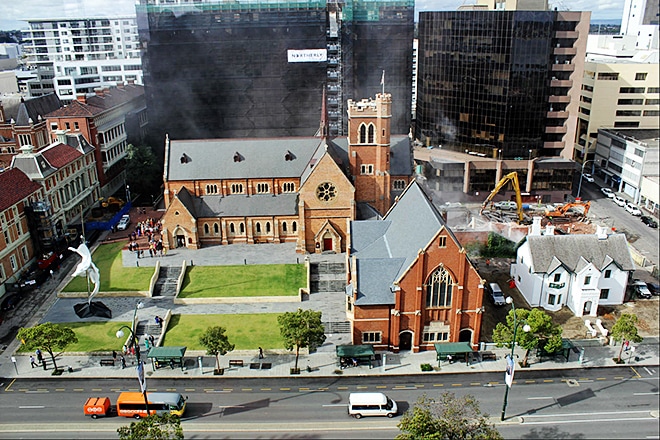Finding Belonging
March 18, 2016
Considering the Adam Goodes controversy in a broader context
March 21, 2016The following Opinion Piece was published in the West Australian Newspaper on Boxing Day 2014, I am posting it here as it is not accessible elsewhere online
Anglican diocese lands in a moral conundrum
Christian churches in Australia find themselves in the middle of a theological paradox.
Many of them, both institutional and dissenting churches, have a commitment to principles of social justice. This will include doing good work for the poor and marginalised and may include advocacy on behalf of the oppressed and voiceless.
Churches would suggest that they can do this because of a gospel-given imperative, but they are also able to do this because they have power and a recognisable voice.
Australian Churches and their schools, welfare and aged-care facilities, conference centres and camp sites also sit on valuable land. Churches also own considerable areas of other land, including office buildings, inner city properties, bush and farmland, some of which generate substantial wealth for those churches.
The paradox is in that all of this land was once stolen as a part of the colonial enterprise that was the establishment of Australia.
Many will dismiss the raising of this issue as grandstanding and something that is too difficult to address now. However, those voices sound like the same shrill noises that were raised in opposition to the High Court’s ‘Mabo’ decision over 20 years ago.
They sound shrill because of their self-interest. The facts of history are plain for all to see.
Some churches, most particularly the Anglican Church, were active participants in that colonial enterprise and have benefited greatly from it.
The Rev. Peter Adam, a highly regarded conservative Melbourne Anglican priest, wrote recently*: “God’s commandments are clear: ‘You shall not murder… you shall not steal… you shall not covet.’ But we Europeans coveted space for a penal colony, new land, new opportunities, and great wealth. We coveted, and so we stole, and we stole, and so we murdered. We read in the law: ‘Cursed be anyone who moves a neighbour’s boundary marker.’ We not only moved the boundary markers, we removed them, and stole the land… they were serious crimes and sins. They included the theft of land, which was not only the theft of livelihood but also the theft of home, identity and religion.
“They included murder and manslaughter, the destruction of social structures and culture, the breaking up of families, the desecration of the dead and genocide, with no legitimate justification.
“But are we responsible for the sins of other?… But what of the defence that many Europeans did not intend to do evil, who did not realise the evil that they did, who intended to do good but who did evil, or who intended to keep at a distance, and so were complicit in the evil of others. We have to face the fact that unintended evil still has grave consequences.”
My church, the Anglican Diocese of Perth, currently finds itself in a conundrum with some of its extensive property holdings. St George’s Cathedral sits in the middle of the original colonial precinct – the house on that property known as The Deanery is on the site of the original jail of the Swan River Colony.
The well documented execution by firing squad of Midegooroo occurred on that site, a controversial event unequalled in Australia’s history.
There is a possibility his body is buried on the site, and indeed human remains have been uncovered there in recent days and on at least one other occasion in the past century.
Over the past four years, I have met with the Archbishop and written to him several times on this matter. The land on which the Cathedral and Deanery were built was a crown grant. That means the government stole the land and gave it to the church. We received stolen goods.
A further difficulty is how the Anglican Church responds to the historical event of the execution that occurred, whether the remains of Midgegooroo are identified or not.
After some initial difficulties and with a general lack of expertise in this area, the Church employed a consultant and engaged in a process with Government and some Aboriginal people whom the Government told the Church were the people to consult.
The Church has let the Government advise them, rather than engaging with the Noongar community and its representative body.
Some feel this is inadequate and are rightly aggrieved. A plaque on the wall or a fountain will not be adequate to recognise what happened on this site.
There needs to be a powerful acknowledgement of our shared history – the history of settler society and the Noongar people.
Perhaps a more perpetual legacy could be the establishment of an endowment for Noongar students to attend to soon-to-be-opened St George’s Cathedral Grammar School.
It could be called the Midegooroo Scholarship.

Deanery circa 1935



